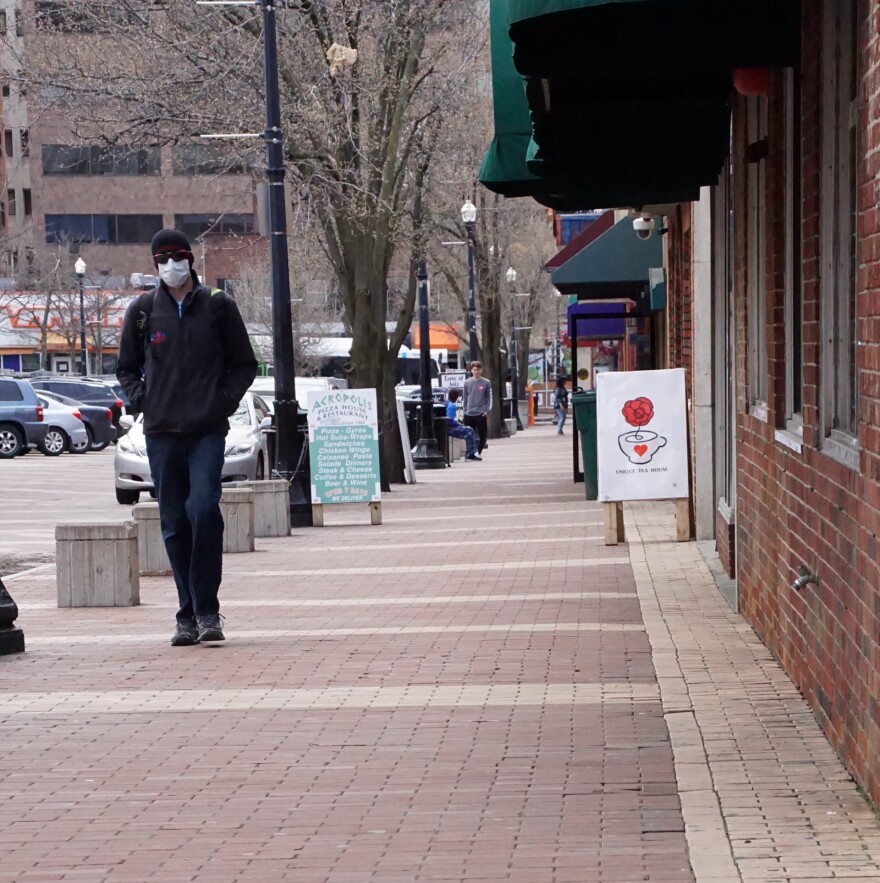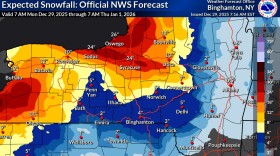When colleges across the state shifted to online learning in March, most students headed home, but Binghamton University student Dino Nicolari decided to stay at his off-campus apartment.
"I really have trouble working at home," Nicolari said.
Unlike many of his classmates, Nicolari was in Broome County when instructions on how to complete the census arrived in the mail. He completed the online questionnaire and will be counted in the right place -- the city where he attends school.
Other students should follow Nicolari’s example, the director of the Census Bureau’s New York Region, Jeff Behler, said.
"Even if they’re at their parents’ house, let’s say in New Jersey or some other place in New York or Connecticut, they need to be counted at that off-campus student housing that they would have been staying at if we didn’t have this pandemic going on right now," Behler said.
Universities send the Census Bureau lists of students living in campus-owned housing, but students who live off-campus must respond to the census on their own. There is growing concern those off-campus students were sent home before they received a memo from the Census Bureau, and the result could have a lasting impact on cities with a high-concentration of college students, Behler said.
"Probably one of the biggest reasons that resonates with our communities and our neighborhoods is the hundreds of billions of dollars of federal funding that is disseminated every year based on formulas that use census data," Behler said.
Cities at risk of losing out on students in their total population include Ithaca, Oswego, Cortland, and Syracuse, where an estimated 12,000 students live in private, off-campus housing.
"In a city like Syracuse, where our total population is between 140,000 to 150,000 people, we think, 12,000 people is a significant number of people," Syracuse’s Census Coordinator Tory Russo said.
According to Russo, roughly $2,000 in federal funding per year makes its way back to Syracuse and Onondaga County. An undercount of the region’s population could have a substantial impact on federal aid.
"There hasn’t been a census year quite like this as it pertains to college students," Russo said.
More than funding is on the line if a significant number of students are left out of this year’s count. Census data helps shape political boundaries and representation at every level of government. The census can also impact the job market.
"Businesses will use this data to determine where they want to expand. They want to go to places where they have a customer base or where they are able to hire employees," Behler said.
Russell Weaver is an economic geographer at Cornell University’s Industrial and Labor Relations School. He studies shrinking cities and says even a one-time decline in population can devastate a community’s morale.
"Shrinking cities almost get involved in this self-reinforcing cycle where they think less of themselves. They have these image crises because they don’t see their population numbers increasing," Weaver said.
Even in 2010, college students proved difficult to capture in the census count. The census tract that includes the university neighborhood had a 54-percent self-response rate a decade ago -- the lowest in the city, Russo said.
Plans to improve student engagement this census have been scrapped because of the pandemic. Now, to get the word out to students, the Census Bureau is leaning on universities, Behler said.
"They know how to message to get those students engaged, and that’s what colleges and universities throughout the area have been doing," Behler said.
The Census Bureau wants students who were living in private, off-campus housing and have yet to respond to the census to go to 2020census.gov.
"Many of them won’t have their census invitation because they left before it was mailed out," Behler said. "But, before you enter in your 12-digit sense ID, there’s a link below that says I don’t have my ID."
In lieu of the ID, students should type in their off-campus address and complete the questionnaire.
"We want them to include the information for themselves and all their roommates and submit that," Behler said.
It is a simple effort that will help ensure an accurate count, Behler said.








